Zelfaangedreven sensor van onkruid op Zernike Campus
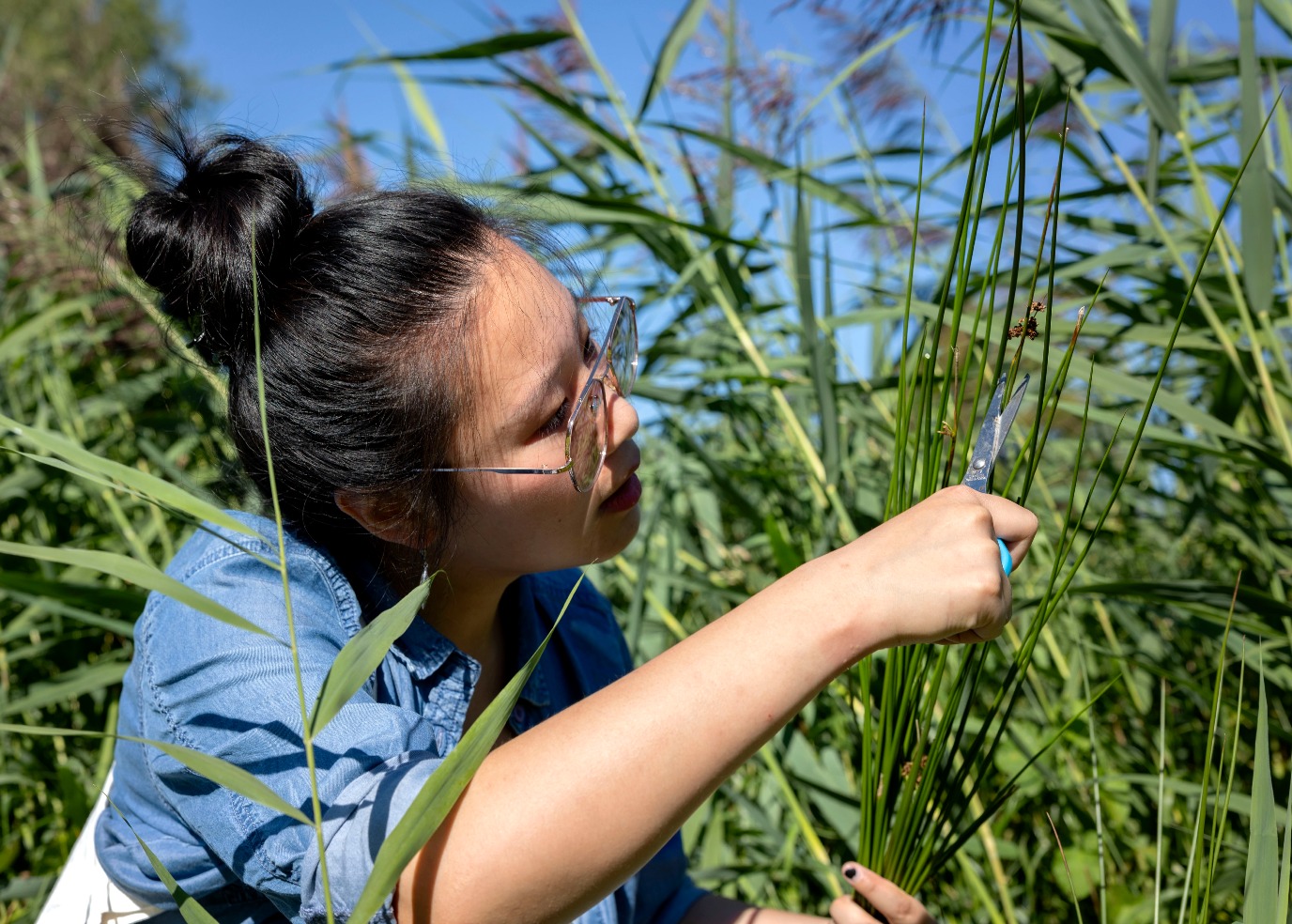
Macromoleculair chemicus Qi Chen van de Rijksuniversiteit Groningen vond een plant, een vervelend onkruid zelfs, en gebruikte het om een kleine, zelfaangedreven sensor te bouwen.
FSE Science Newsroom | Charlotte Vlek
Het verhaal van Qi Chen’s onderzoek is er een vol serendipiteit. In het eerste jaar van haar promotieonderzoek zat ze met vrienden buiten op het Zernike terrein de onderwerpen van hun onderzoek te bespreken. Chen legde uit dat ze schuimachtige materialen zou bestuderen. Een vriend had ondertussen terloops de buitenkant van een grasachtige plant zitten pellen, waarbij binnenin een open en luchtige structuur zichtbaar werkt. Voor de grap stelde hij voor dat Chen dat wel zou kunnen onderzoeken. Ze stopte de plant in haar rugzak en dacht er verder niet meer aan.
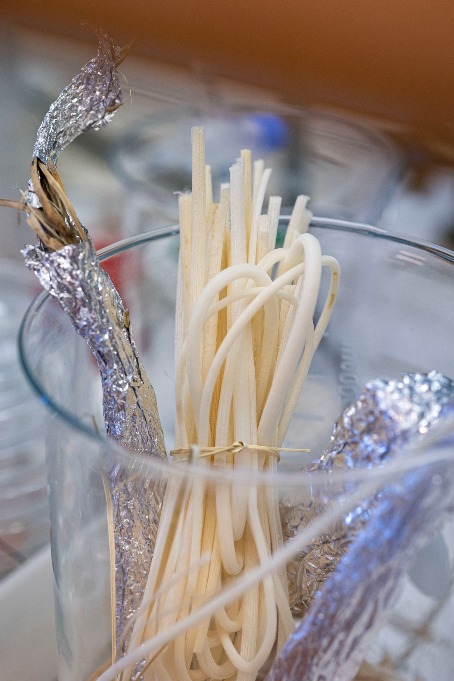
Bijna twee jaar later kwam ze de plant weer tegen in haar rugzak. Ze had in die twee jaar geprobeerd om bacteriën elektriciteit te laten produceren, met een schuimachtig materiaal als leefomgeving voor die bacteriën. De resultaten waren niet bepaald goed. Dus ze besloot om eens beter te kijken naar die grasachtige plant: een veelvoorkomend onkruid met de naam pitrus (Juncus effusus L.).
Kleine sneeuwvlokjes
‘De structuur van de pitrus-stengel bestaat uit laagjes van onderling verbonden sterretjes, een beetje alsof het kleine sneeuwvlokjes zijn,’ legt Chen uit. Deze laagjes liggen boven op elkaar, waardoor een structuur ontstaat waar veel lucht doorheen kan. Chen: ‘Het materiaal was vederlicht. Een keer liet ik een beetje ervan onafgedekt liggen in het lab, en toen ik de deur opendeed waaide het weg. Het was net of het gesneeuwd had in de gang.’
De binnenkant van planten in waterrijke gebieden heeft vaak zo’n open structuur: dat heet aerenchyma. ‘De plant heeft deze structuur nodig om te ademen,’ legt Chen uit, ‘want met hun wortels in een natte omgeving moeten ze zuurstof uit de lucht door de stengel transporteren.’ Nu blijkt het ook nog eens een fantastisch alternatief te zijn voor een natuurlijk schuimachtig materiaal.
Een klein apparaatje voor in je schoen
De unieke vorm van deze kleine sneeuwvlokjes in de pitrus-stengel bleken ook nog eens perfect te zijn voor de bouw van een nanogenerator: een klein apparaatje dat een elektrische lading produceert, dat gebruikt kan worden als sensor of als energiebron. Zo’n nanogenerator kan de huidige trend van steeds kleinere draagbare devices helpen verduurzamen: het neemt de plaats in van batterijen die uiteindelijk in het elektronisch afval zouden belanden.
(tekst gaat verder onder de foto's)
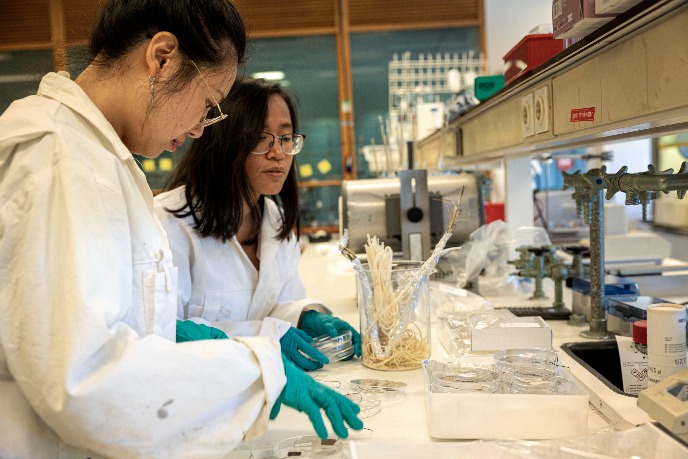
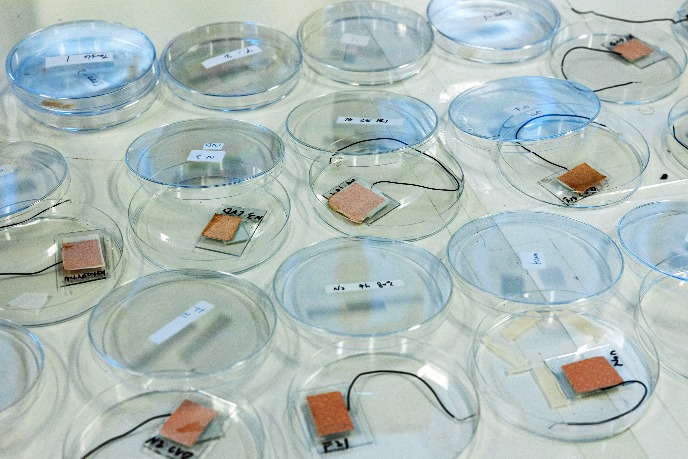
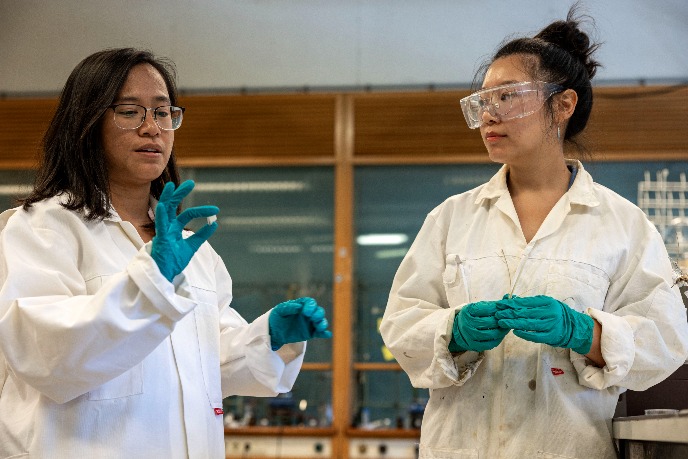
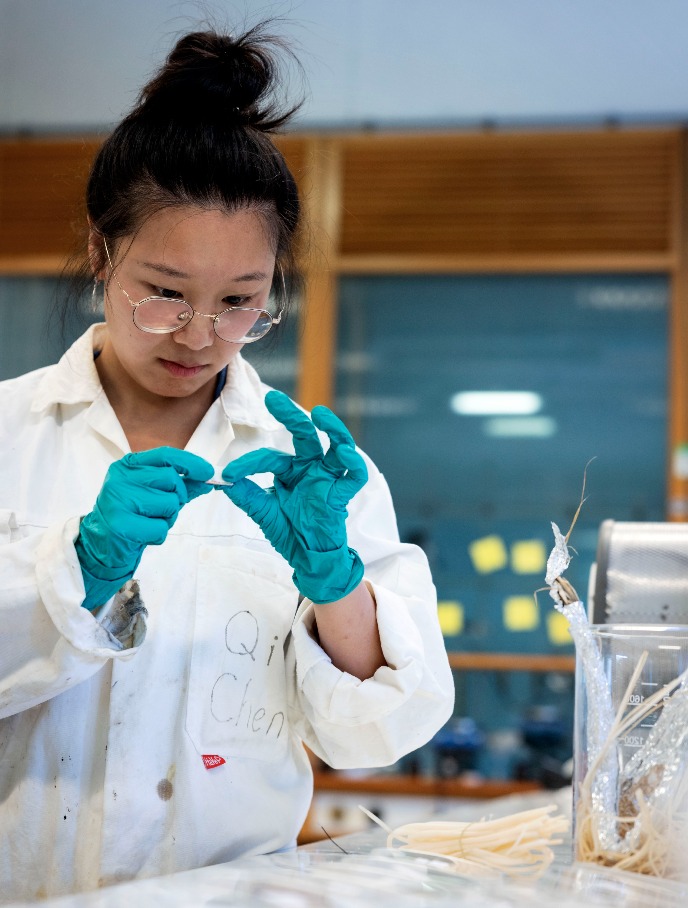
Samen met collega’s Wenjian Li en Feng Yan, bouwde Chen een nanogenerator ter grootte van een postzegel, ongeveer een millimeter dik. Die kan dienen als bewegingssensor, legt co-auteur Dina Maniar uit: ‘Je kunt het in je schoen stoppen, en als je loopt, springt of rent, geeft het een specifiek signaal af dat we kunnen herkennen.’
Dit kleine apparaatje werkt op basis van hetzelfde fenomeen dat je een schok geeft wanneer je een deurklink aanraakt nadat je over tapijt hebt gelopen: het tribo-elektrisch effect. Het bestaat uit twee dunne laagjes met een ruw oppervlak. De twee laagjes worden uit elkaar gehouden door een separator, en wanneer ze samengedrukt worden ontstaat wrijving, en produceren ze een elektrische lading. Net als de lading die opbouwt wanneer je over een tapijt hebt gelopen. Maniar: ‘Zo zetten we beweging om in elektrische signalen.’
De kleine sneeuwvlokjes van de pitrus vormen een ruw, schuimachtig laagje met veel poriën erin op de laagjes van de nanogenerator: perfect voor optimale wrijving tussen de twee laagjes, en tegelijk lichtgewicht. Dit was opnieuw een toevallige vondst: Chen liet een beetje van haar oplossing met materiaal van het plantje vallen op aluminiumfolie, en ruimde het niet meteen op. Het water verdampte, en een dun laagje bleef achter, met de ruwe structuur van de sneeuwvlokjes.
Dit kunnen we echt duurzaam noemen
Al jaren werken wetenschappers aan schuimachtige materialen op basis van cellulose uit planten. ‘Doorgaans gaat er veel energie zitten in het onttrekken van de cellulose, waarbij ook de structuur ervan kapotgaat,’ legt hoogleraar toegepaste chemie en co-auteur Katja Loos uit. ‘Daarna gaat er weer veel energie zitten in het produceren van de benodigde structuren voor nieuwe materialen.
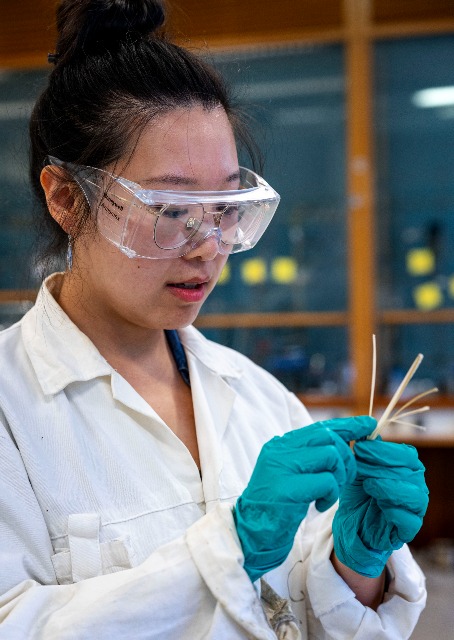
Chen was in staat om de bouwstenen – de kleine ‘sneeuwvlokjes’ – uit de pitrus-plant te halen door die simpelweg te pellen en op te lossen in een eenvoudige mix. ‘We kunnen dit dus echt duurzaam noemen,’ zegt Chen: in dit proces ging weinig energie zitten, en geen fossiele oliën. Chen werkt momenteel aan andere toepassingen: ze wil de sneeuwvlokjes uit de pitrusplant gaan gebruiken in een batterij, en om vervuiling uit water te verwijderen.
Helaas heeft de gemeente onlangs weer eens aan onkruidbestrijding gedaan, waardoor Chen een stukje verder moet fietsen voor haar pitrus. Ze lacht. ‘In ons lab is het geen onkruid, maar een kostbare grondstof.’
Referenties
-
Qi Chen, Jur van Dijken, Dina Maniar, Katja Loos, Aerenchyma Tissue of Juncus Effusus L.: A novel Resource for Sustainable Natural Cellulose Foam. Cellulose, 2023. https://doi.org/10.1007/s10570-023-05453-9
-
Qi Chen, Wenjian Li, Feng Yan, Dina Maniar, Jur van Dijken, Petra Rudolf, Yutao Pei, Katja Loos, Lightweight Triboelectric Nanogenerators Based on Hollow Stellate Cellulose Films Derived from Juncus effusus L. Aerenchyma. Advanced Functional Materials, 2023. https://doi.org/10.1002/adfm.202304801
Meer nieuws
-
19 december 2025
Mariano Méndez ontvangt Argentijnse RAÍCES-prijs
-
18 december 2025
Waarom innoveren, en voor wie?
-
17 december 2025
Ben Feringa wint Feynmanprijs
